Audience Feedback Loops
As organizations engage in the process of creating a strategic vision and subsequent plan, there is an important question in the process that should come between their why (i.e. their vision/mission) and their how (i.e. their goals/measures of success/action plan) – the question of who.
As they look ahead, once leadership has reached consensus on the impact they want to make in the future – why they will exist – for member-based organizations the next question concerns their audiences. Namely, as they look at a future horizon, who are the audiences they will primarily serve in the next 12 months to progress down the path to their multi-year vision.
Once chosen, an organization’s Board will need to hear from and about these audiences in greater depth. After all, while we task the Board of Directors with discussing items of import to the organization and making subsequent fiscal, legal, and strategic decisions, we rarely structure feedback loops of input so they consider perspectives outside of those they bring to the table from their own experience or network. Simply put – if they have prioritized focusing on creating programmatic solutions that address the needs of core audiences, then they should hear on a continual basis the perspective and needs of those audiences to best align their decisions.
Here are just a few ways to structure connection of audience voice with Board listening:
1. Audience Advisory Groups – These groups need no official term of service. When someone joins or participates in your organization and belongs to one of the core audiences that you Board has identified, have an open offer to add them to that audience’s advisory group. Typically, these groups can be sent 2-3 questions of strategic input 2-4 times a year. Those that join the group never have to meet in person, never have to travel to serve, and can still give their voice to your organization, presenting a broad range of response to the Board for consideration.
2. Core Audience Task Force – As the audiences the organization prioritizes continues to evolve as disruption changes the landscape, it can be useful for a Board to form a unique task force for each audience to focus on outreach and listening. Rather than a permanent committee, these can exist for as long as the audience is a priority, and the scope of how the Task Force listens to the audience can evolve over time. The Task Force can choose to run ongoing phone interviews, informal focus groups, or quick-impact polls on social media as a few examples. As the results continue to be collected, those findings that are heard time and again can be powerful input points for Board consideration.
3. Board Audience Representatives – Once streams of input start to flow up to the Board level, there will be a need for translation and transmission of what was received. One approach is to assign a singular prioritized audience to a corresponding single Board member. These Board members can be given standing time on the agenda, even if for a few minutes, to share what they are hearing from the audience they represent. When major items of organization focus and investment arise, these Board members will add the perspective they have heard from their prioritized audience. By creating an expectation of listening mastery to designated Board members, their work should, in turn, elevate the listening mastery of the Board as a whole.
